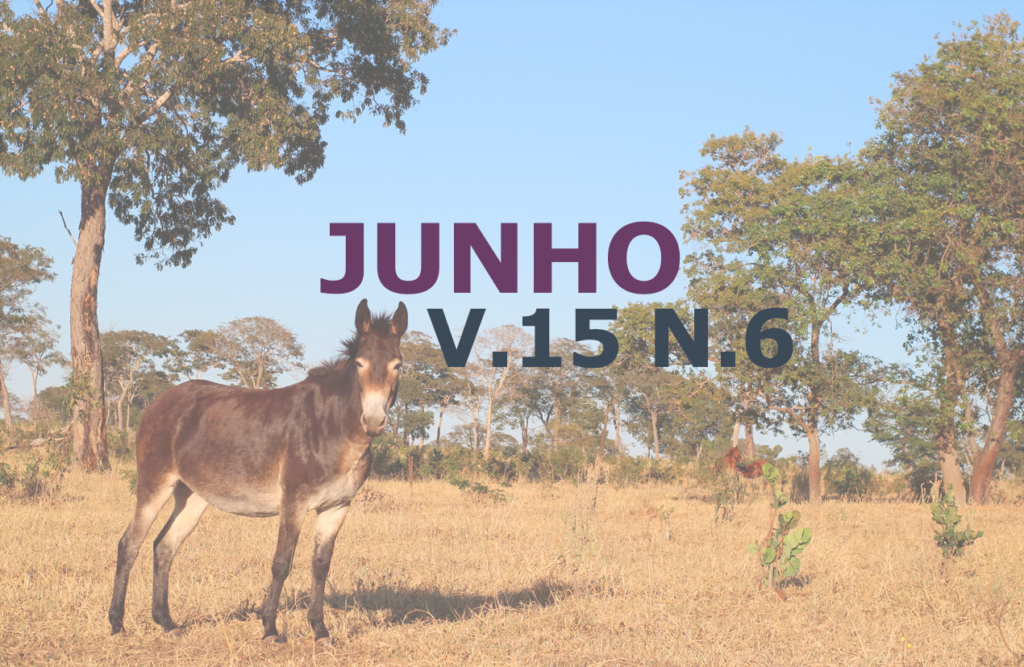Dogs blood group DEA-1 and its relation to transfusion reactions
DOI:
https://doi.org/10.31533/pubvet.v15n06a839.1-8Keywords:
Erythrocyte antigens, crossmatch, blood typing, blood transfusionAbstract
The purpose of this study was to test the blood reactions between the blood of undefined blood-type dogs and the blood of negative “Dog Erythrocyte Antigen” (DEA) 1 dogs from Jaraguá do Sul-SC, Brazil. Therefore, 12 mongrel dogs were selected to form 2 groups: Group 1 with two dog blood samples (A and B) negative DEA-1; Group 2: 10 dogs of undefined blood-type. The blood-type of the Group 1 dogs was identified by RapidVet® test that was performed in 5 dogs of which 2 negative DEA-1 were selected. Subsequently, the Major Crossmatch test, rapid method in microscope slide, was performed between all the Group 2 blood samples and both Group 1 samples. The slides were examined for macroscopic and microscopic agglutination to define the samples compatibility. From the 5 blood-type tested dogs, 4 were negative DEA-1 and 1 was positive DEA-1. From the ten crossmatch tests performed with the group 1 dog A sample, 70% of the samples were compatible, they did not present micro or macroscopic agglutination and 30% were incompatible, presented agglutination. From the crossmatch tests performed with the group 1 dog B sample, 40% were compatible and 60% of the samples were incompatible. The statistical analysis of the obtained results does not show difference between the frequencies of the compatible and incompatible results of the A and B dog samples and comparing the samples results there was a tendency (0.09) of difference in the results frequency. The risk calculation of a negative DEA-1 dog receiving blood of a positive DEA-1 dog at a first-time transfusion was 24,75% and 6,15% of this same dog receiving incompatible blood in a second transfusion. The frequency of negative DEA-1 blood dogs was higher than the frequency of positive DEA-1 blood dogs. The low incidence of the DEA-1 group establishes a need of further and more detailed study to determine the real incidence of this blood group in Jaraguá do Sul, SC. Facing the results, it was concluded that the negative DEA-1 frequency was higher than the positive DEA-1 fequency in Jaraguá do Sul, SC and that the risk of blood incompatibility between the studied dogs during a first and second transfusions were 24,75% and 6,15%, respectively.
Downloads
Published
Issue
Section
License
Copyright (c) 2021 Flávia Zandoná Puchalski, Juliana Murasaki, Pricilla Pozzatti, Carlos Eduardo Nogueira Martins

This work is licensed under a Creative Commons Attribution 4.0 International License.
Você tem o direito de:
Compartilhar — copiar e redistribuir o material em qualquer suporte ou formato
Adaptar — remixar, transformar, e criar a partir do material para qualquer fim, mesmo que comercial.
O licenciante não pode revogar estes direitos desde que você respeite os termos da licença. De acordo com os termos seguintes:
Atribuição
— Você deve dar o crédito apropriado, prover um link para a licença e indicar se mudanças foram feitas. Você deve fazê-lo em qualquer circunstância razoável, mas de nenhuma maneira que sugira que o licenciante apoia você ou o seu uso. Sem restrições adicionais
— Você não pode aplicar termos jurídicos ou medidas de caráter tecnológico que restrinjam legalmente outros de fazerem algo que a licença permita.





